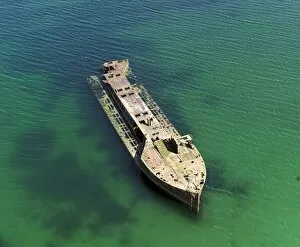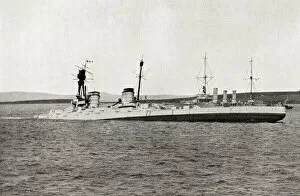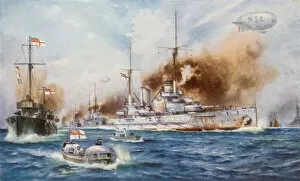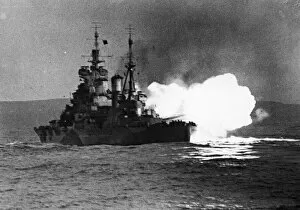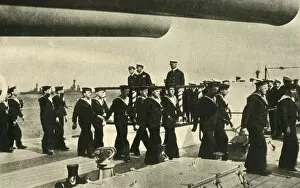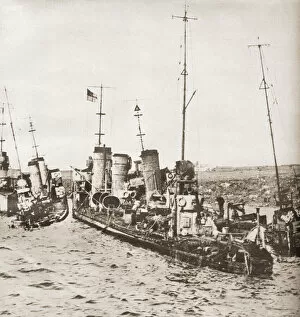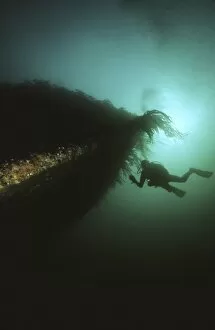Scapa Flow Collection
"Scapa Flow: A Historic Maritime Site" Scapa Flow, located in Inganess Bay, Scotland, holds a significant place in naval history
All Professionally Made to Order for Quick Shipping
"Scapa Flow: A Historic Maritime Site" Scapa Flow, located in Inganess Bay, Scotland, holds a significant place in naval history. In 1917, Squadron Commander Edwin Harris Dunning achieved an incredible feat by landing his Sopwith Pup biplane on the moving HMS Furious at Scapa Flow. This marked the first successful landing of an aircraft on a moving ship. The waters witnessed another momentous event when the German battlecruiser SMS Hindenburg sank on June 21st. This incident further solidified Scapa Flow's reputation as a strategic location during World War I. In 1918, the German High Seas Fleet surrendered at Scapa Flow, depicted vividly in a captivating color lithograph from that time. The surrender was followed by the sinking of the German fleet and its subsequent return after seven years underwater – an astonishing sight captured in yet another colorful lithograph. The scuttling of the German fleet at Scapa Flow during World War I is also well-documented through various historical sources and artworks. One such depiction from 1920 portrays the sinking of SMS Derfflinger amidst chaotic scenes. During this era, even royalty paid visits to Scapa Flow; King George V visited the Grand Fleet stationed there in June 1917. An unknown creator immortalized this royal visit with a fascinating image published around 1920. Scenes of naval power were not uncommon near Scapa Flow either; HMS Howe firing her mighty 14-inch guns showcases British naval might during training exercises off these shores. Additionally, brave torpedomen aboard HMS Jamaica pursued U-Boats into these treacherous waters while following their trail—an act deserving admiration for their courage and determination. Lastly, we cannot forget about Launceston Castle—a British corvette that ventured into Scapa after tracking U-Boats—highlighting both bravery and resourcefulness within Britain's naval forces.


